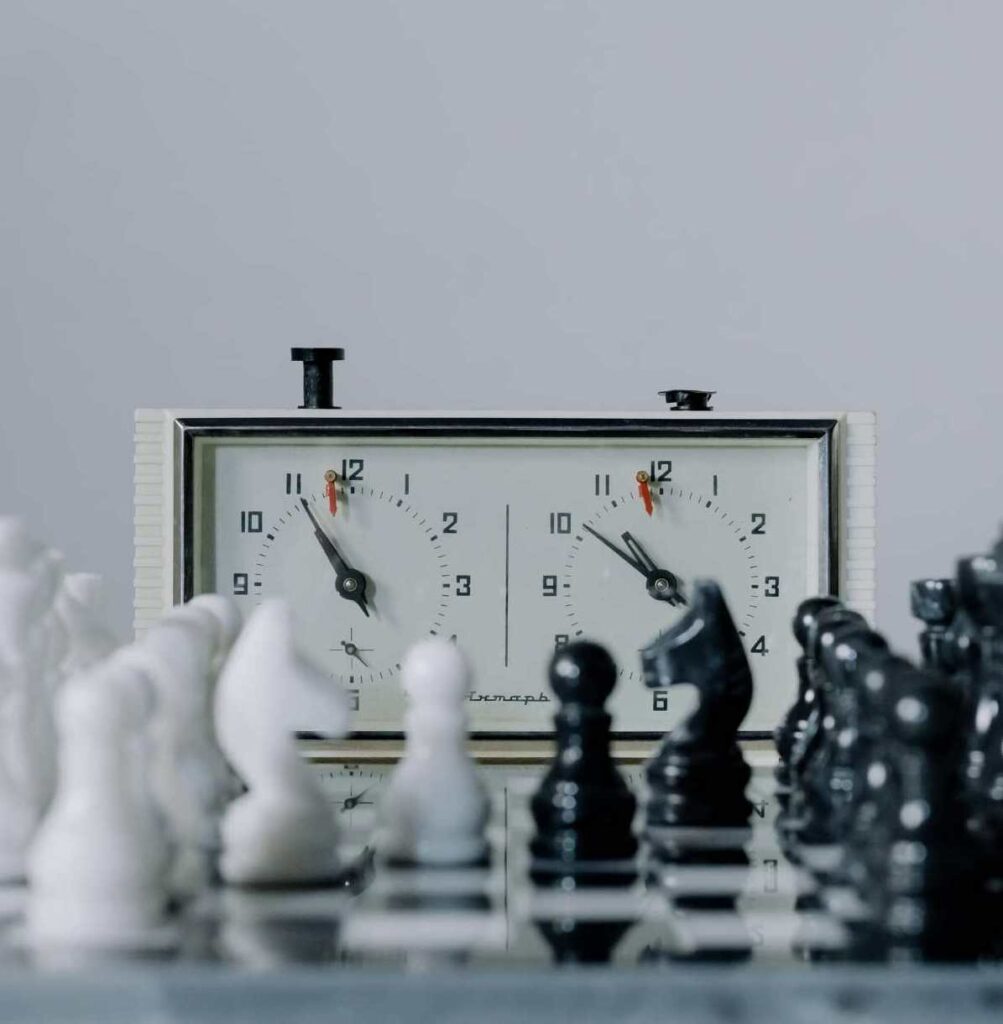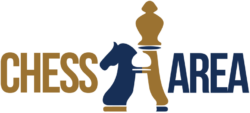Chess is not always played with a clock. But if you choose to use one, it helps prevent the game from dragging out too long due to someone taking their time with their next move.
Not only that, but clocks are usually used in tournament play. So it’s a good idea to learn how to use them. As with most types of clocks, chess clocks can be manual or digital.

And in this article, you’ll learn a little about both of them. Plus a few other things you may not have known even if you’ve been playing chess for years.
Chess Timers: What You Need to Know
Most people have seen chess clocks in movies and television programs. But unless you play chess, you probably don’t know how they work.
In reality, they’re very easy to understand. First of all, they are built with two timers in the same unit. The clocks do not run simultaneously. Instead, they keep track of each player’s time used.

Because of this, the game doesn’t get drawn out and won’t last forever because both of the players know they only have a certain amount of time to make their move. This is especially helpful during tournaments.
Let’s say the game has been allotted 60 minutes total. With a chess clock, it’s easy to keep each player’s time down to 30 minutes. With timers, you can also run very large chess tournaments, and everyone can finish on time.
When you have this, each player can play four to five games in one day. But more importantly, everything runs smoothly like a well-oiled machine. There won’t be any players finishing on time while others are finishing late. Everyone will be on the same page.
How Do You Set a Chess Timer?
On a chess timer, there are two dials or time displays, plus two buttons that are located on top of the clock and are therefore easy to reach.
The clocks alternate from side to side to give each player a way to keep track of their time.

Analog clocks have circular faces and a neutral position that can pause both timers. When you make your move, you’ll press the button close to you, which will stop the time on your side and start the time for your opponent.
Digital clocks are usually preferred because they are so versatile, but analog clocks are not exactly unpopular.
In general, a digital clock will count down, so your time is up once it reaches 0:00.

There are also various modes and setting methods, but it isn’t exactly complicated to learn. We’ll talk a bit more about digital clocks later, but for now, let’s look at an analog standard chess clock.
How is a chess clock powered?
Analog chess timers can be battery operated or powered by spring tension, which means you’ll need to wind them regularly.

As with regular clocks, however, you have to be careful not to overwind a chess clock. Analog clocks come with hands and a dial and count up instead of down. When your expired time is up, a small red flag will appear. When the minute hand reaches the 12 o’clock position, the red flag rises, and in competition, the loser is the one whose red flag “falls.”
Besides winding the clock, you’ll set it by using the two knobs on the back of the clock (one knob for each display). Watch the clock face and turn this knob at the same time to set the clock.

If the game you’re about to play will last for one hour or less, set each side to 5:30. This gives you a completed time of 6 o’clock, which is pretty standard. You can look at the clock at any time, and when you add the time from 6 o’clock to the time that is displayed, you can tell exactly how much time is left.
How Does the Clock Work In a Chess Game?
When a chess clock is used, remember that each player has to make a certain number of moves in the allotted time.
White pieces make the first move, and then the players shake hands. Next, the black side presses the play button. The white pieces follow, and the player presses the side button on the clock.

Every time your opponent makes a move, they’ll press a button on that side, which causes the timer to stop and your timer to start at the same time.
You have to press the button at every move. It may sound like a pain to do this but once it’s mastered, which won’t take long, it allows for the game to run more smoothly.
If you’re playing a 30-minute game, the last five minutes are important. On an analog clock, the red flag will rise as the ending time approaches.
Once that red flag falls, the game is over, and that player loses the game. When your time is up for a particular move, there is usually a beeping sound.
How Do You Set a Digital Chess Timer?
The first thing you need to do when using a digital chess timer is to make sure the batteries are new, or at least not very old. After all, you don’t want your clock dying in the middle of a chess game, particularly if it’s a tournament game.

Once you agree on the time allowance for the game, you simply select the time control setting that matches that time.
Next, just wait until the player that has the black pieces presses their button. When this happens, the time will start automatically.
What is the Standard Chess Clock?
There really is no “standard” chess clock because each tournament has officials who decide whether they should use a digital or analog clock.

Digital clocks tend to be a little more accurate and can be easier to read, so they do offer certain advantages over analog clocks. Nevertheless, many people have been playing chess since before digital clocks came out and still prefer analog timers over digital.
What Time Should I Set My Chess Clock?
For a 30-minute chess game, the clock is usually set to 5:30 on each side. As soon as the first clock hits 6:00, the game is over, and a winner can be declared.

What is a 15-10 Chess Game?
A 15-10 chess game means that you’re given 15 minutes to start, but you get 10 seconds added to the clock with each move.
It means that as long as you don’t run out of time completely, you’ll always have those 10 seconds to make your next move. In essence, it reduces the number of errors you make from getting stressed out over the time you have left.
What is a 45-45 Chess Game?
When you see these numbers, the first number is always the minutes for the players, and the second number is the number of seconds that you receive to make your next move.

So with a 45-45 chess game, you get 45 minutes but an additional 45 seconds to make your next move.
What Is a 3-2 Game in Chess?
Just like the two examples mentioned above, the 3-2 chess game means the timer is set for 3 minutes, but you also get 2 seconds to start your next move.
There are different reasons for all of these numbers, which you’ll understand better the more you play.
- Is Chess.com Premium Worth It? - May 25, 2023
- How To Set Traps In Chess? - May 25, 2023
- Chess.com Review - May 25, 2023
